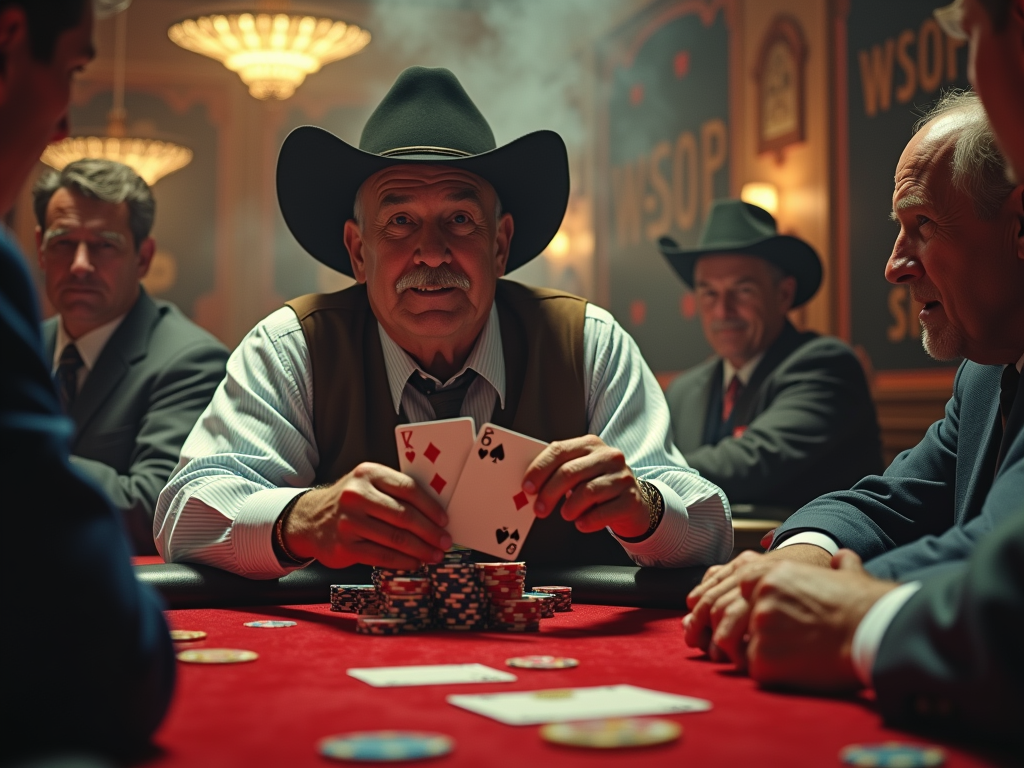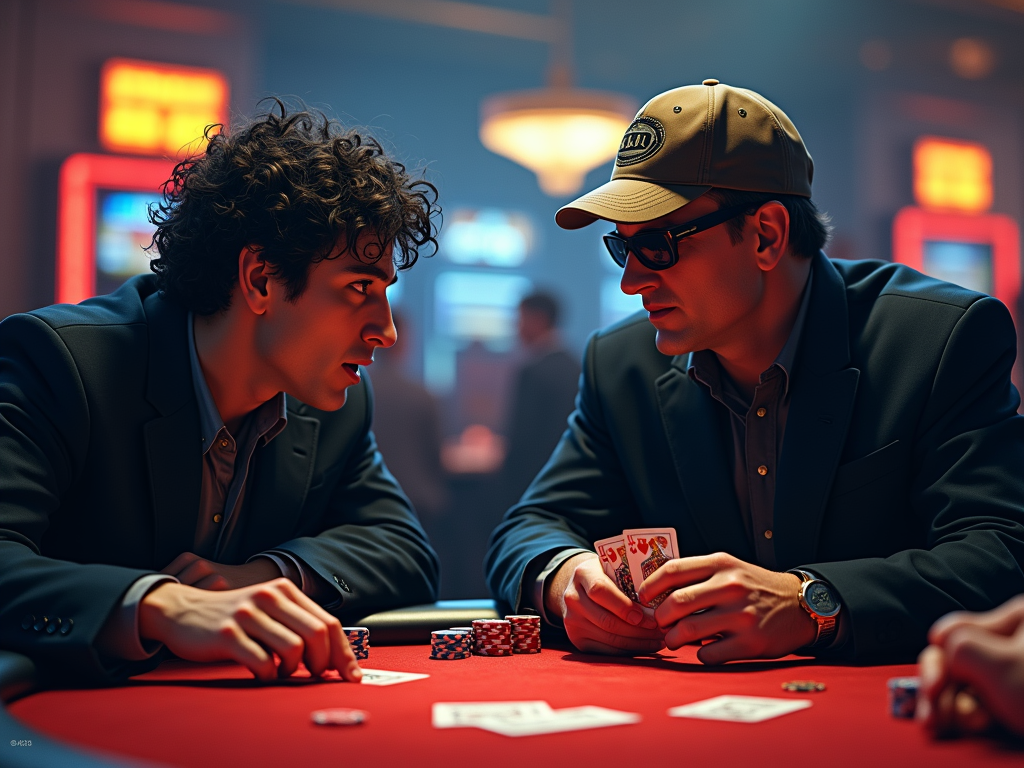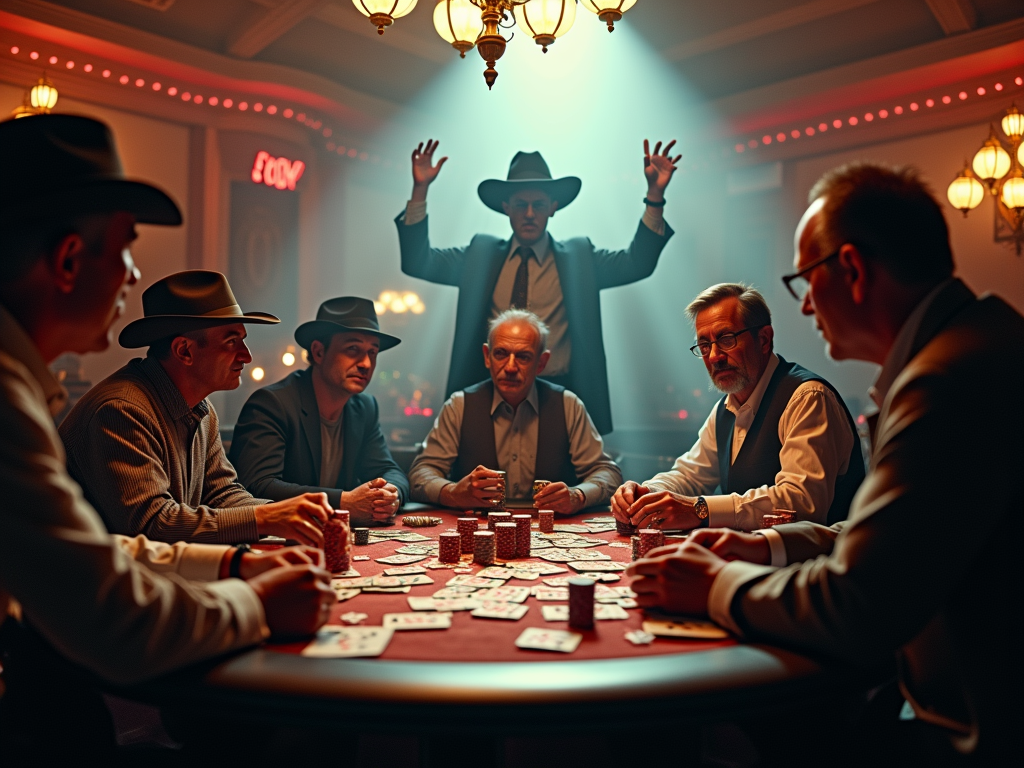The Evolution of Professional Poker
Professional poker evolved through trailblazing players who created unique strategies that transformed the game from secret backroom matches into a global phenomenon. Doyle Brunson’s bold betting tactics and groundbreaking 1978 book Super/System marked the first public revelation of professional poker strategies.
Key Takeaways
- Doyle Brunson established aggressive betting patterns and authored Super/System in 1978, giving casual players their first glimpse into professional-level strategy.
- Phil Ivey mastered multiple poker variants while maintaining steady decision-making across all stake levels.
- Daniel Negreanu introduced Small Ball strategy, emphasizing frequent hand participation with controlled betting.
- Phil Hellmuth and Stu Ungar proved success comes through different styles, from calculated to ultra-aggressive play.
- Modern poker demands strong psychological skills and table presence, with players creating specific personas for strategic advantage.
Phil Ivey and Technical Mastery
Phil Ivey’s consistent excellence stems from flawless execution in any poker format, regardless of stakes or opponents. His technical precision combines with an unreadable demeanor that frustrates opponents and forces errors. His ability to adapt and control game flow sets him apart as one of the most formidable players in the history of poker.
Daniel Negreanu and the Small Ball Revolution
Daniel Negreanu’s Small Ball approach changed standard play by showing the effectiveness of seeing more flops while managing risk through strategic bet sizing. This method allows players to stay unpredictable while maintaining control over pot sizes, emphasizing skill over raw aggression.
Stylistic Diversity in Elite Poker
The diverse success of players like Phil Hellmuth, with his patient tactical style, and Stu Ungar, known for relentless aggression, demonstrates poker’s flexibility. Each champion developed distinctive methods that produced championship results through different paths. This variety underscores that no single style guarantees victory in high-stakes poker.
The Rise of Psychological Warfare
Mental warfare and calculated table presence now stand as essential components of high-level poker. Top players craft specific personalities and behaviors that maximize their strategic edge while putting opponents on tilt. This psychological aspect has become as critical as technical skill in modern poker’s competitive landscape.
The Evolution of No-Limit Hold’em Through Doyle Brunson’s Legacy
From Back Rooms to Mainstream Success
Doyle Brunson transformed poker from a shadowy back-room game into a mainstream phenomenon. His impact on modern poker strategy and gameplay can’t be understated, especially after publishing his groundbreaking book Super/System in 1978. This revolutionary text laid bare the strategic foundations of poker, marking the first time professional-level strategies were made accessible to the public.
His aggressive betting style became legendary, particularly after winning consecutive World Series of Poker Main Events in 1976 and 1977. In both victories, he clinched the title with the same hand – a modest 10-2 – demonstrating his mastery of psychological warfare at the table.
Strategic Innovation and Championship Success
Known affectionately as “Texas Dolly,” Brunson’s approach to poker centered on three key elements that changed the game forever:
- Aggressive pre-flop raising with a wide range of hands
- Constant pressure through substantial post-flop betting
- Expert use of position to control pot sizes
His methods proved incredibly successful, leading to 10 WSOP bracelets and countless victories in high-stakes cash games. What set him apart wasn’t just his technical skill – it was his ability to adapt his strategy based on his opponents’ tendencies and weaknesses.
Throughout his career, Brunson dominated the highest-stakes cash games in Las Vegas, often playing for pots larger than many tournament first prizes. His strategic insights focused on exploiting opponents through relentless pressure, a style that many modern professionals still emulate today.
His influence extends beyond his tournament achievements. By introducing concepts like floating (calling with weak hands to bluff later), and aggressive continuation betting, he created the template for today’s dynamic playing style. His emphasis on hand reading and live tells has helped countless players improve their game, making him poker’s most influential strategic pioneer.

The Modern Master: Phil Ivey’s Multi-Game Dominance
Phil Ivey stands as one of poker’s most feared competitors, with an incredible $40 million in live tournament earnings. My analysis of his gameplay reveals a player who’s perfected the craft across every major poker format, making him a true poker master at both online and live tables.
The Complete Package: Skills and Achievements
The “Tiger Woods of Poker” has earned his reputation through consistent excellence across multiple poker variants. His 10 WSOP bracelets span different game formats, showcasing his adaptability and deep understanding of poker fundamentals. From Texas Hold’em to Omaha, and from Seven-Card Stud to Mixed Games, Ivey’s command of various poker formats sets him apart from single-game specialists.
Trademark Techniques and Psychology
The infamous “Ivey Stare” has become his psychological weapon at the tables. This piercing look puts immense pressure on opponents, often causing them to make crucial mistakes. Early in his career, Ivey honed his skills online under the nickname “No Home Jerome,” crushing high-stakes games while developing his distinctive playing style.
Here’s what makes Ivey’s approach particularly effective:
- Aggressive bet sizing that puts maximum pressure on opponents
- Perfect balance between aggression and patience
- Quick adaptation to different opponents’ playing styles
- Extraordinary ability to pick up physical tells
- Consistent decision-making regardless of stakes
His success stems from this combination of technical skill, psychological warfare, and an unwavering focus at the table. Through decades of competition at the highest levels, Ivey has shown that true poker mastery requires excellence across all game variants, not just specialization in one format.
Reading Players and Small Ball: Daniel Negreanu’s Approach
Daniel Negreanu‘s remarkable poker journey has redefined modern gameplay, with over $50 million in live tournament earnings putting him at #3 on poker’s all-time money list. His innovative Small Ball strategy and exceptional ability to read opponents have made him one of poker’s most influential figures.
The Small Ball Revolution
Small Ball poker transformed how players approach the game. Rather than waiting for premium hands, this strategy focuses on playing a wider range of starting hands while keeping pot sizes manageable. This approach helps minimize risk while maximizing opportunities to outplay opponents post-flop.
Here are the key elements of Negreanu’s Small Ball strategy:
- Making smaller pre-flop raises to see more flops
- Playing position-dependent hands more frequently
- Using controlled bet sizing to maintain pot control
- Applying constant pressure with minimal risk
- Exploiting post-flop play against aggressive opponents
The Art of Reading Players
Negreanu’s most striking skill is his uncanny ability to read opponents and verbalize their exact holdings at the table. His six WSOP bracelets and two WPT titles showcase how effective this skill can be in tournament play. As an expert at mastering poker strategy and table dynamics, Negreanu combines sharp observation with psychological insight.
His read-based approach relies on picking up physical and betting pattern tells. While maintaining conversation at the table, he’s constantly gathering information about his opponents’ playing styles, comfort levels, and decision-making processes. This combination of technical skill and psychological understanding has helped him stay at the top of the game for over two decades.
Beyond his tournament success, Negreanu has become poker’s leading ambassador, sharing his knowledge through training content and media appearances. His ability to explain complex concepts in simple terms has helped countless players improve their game. By focusing on both the technical and psychological aspects of poker, he’s shown that success at the highest levels requires mastery of both elements.
Through his career, Negreanu has proven that aggressive play doesn’t require reckless gambling. Instead, his measured approach demonstrates how controlled aggression and careful observation can lead to consistent success at the poker table. His influence on modern poker strategy continues to shape how new players learn and approach the game.
The Natural Talents: From Ungar to Hellmuth
The poker world has seen countless talented players, but few match the raw talent and intuition of Stu Ungar and Phil Hellmuth. These players didn’t just win – they revolutionized poker strategy through their distinctive approaches to the game.
Masters of Their Craft
Stu “The Kid” Ungar stands as the only player in history to win the World Series of Poker Main Event three times (1980, 1981, and 1997). His hyper-aggressive style and uncanny ability to read opponents set him apart from his peers. Coming from a Gin Rummy background, Ungar brought a fresh perspective to poker, proving that card-playing skills can transfer across different games. His approach to aggression is particularly fascinating – he wouldn’t just bet when he had strong hands, but consistently applied pressure to force opponents into mistakes.
Phil Hellmuth, dubbed “The Poker Brat,” has crafted his legacy through what he calls “White Magic” – an exploitative playing style that’s earned him an unprecedented 17 WSOP bracelets. His strategic approach to tournament poker centers on these key elements:
- Reading opponents’ tendencies and adjusting accordingly
- Playing conservatively in early stages
- Maximizing value from strong hands
- Avoiding unnecessary risks
- Capitalizing on opponents’ mistakes
Both players showcased unconventional approaches that challenged traditional poker wisdom. While Ungar relied on his lightning-quick math skills and aggressive betting patterns, Hellmuth developed a more methodical style focused on opponent exploitation. Their success proves there’s no single path to poker greatness – it’s about finding your unique strengths and maximizing them at the table.
What makes these players truly remarkable isn’t just their winning records – it’s their ability to adapt their natural talents to create sustainable advantages. Ungar’s aggressive style might seem risky to many, but his exceptional card sense allowed him to make plays others couldn’t imagine. Similarly, Hellmuth’s ability to get inside opponents’ heads has helped him stay relevant in a game that’s changed dramatically over decades.

Psychological Warfare in Modern Poker
Top poker players have mastered the delicate art of psychological manipulation, creating distinct personas that leave lasting impressions at the table. I’ve observed how legends like Phil Ivey command respect through calculated silence and unwavering focus, making opponents second-guess their decisions through sheer presence alone.
Different Styles of Mental Manipulation
Daniel Negreanu takes an opposite yet equally effective approach, using friendly conversation and seemingly casual banter to extract valuable information from his opponents. His chatty nature often puts players at ease, leading them to reveal subtle tells and betting patterns they’d otherwise keep hidden. Through my analysis of professional poker strategy and gameplay, I’ve noticed how these contrasting styles can be equally successful.
Phil Hellmuth has turned his famous emotional outbursts into a strategic weapon. His “Poker Brat” persona serves multiple purposes:
- Creates an unpredictable image that keeps opponents off-balance
- Forces players to make mistakes through emotional manipulation
- Masks his actual skill level behind theatrical behavior
- Builds a memorable brand that intimidates amateur players
- Generates television-worthy moments that increase his marketability
Modern poker demands flexibility in psychological approach. I’ve found that successful players must shift their table presence based on:
- The stakes being played
- Opponent skill levels and personalities
- Tournament versus cash game dynamics
- Live versus online environments
- Current table dynamics and energy
The best players balance technical poker knowledge with psychological insight. While Game Theory Optimal (GTO) play forms a solid foundation, the ability to read opponents and exploit their weaknesses often leads to higher profits. Live tells, betting patterns, and verbal cues provide valuable information that pure math can’t capture.
Players who succeed at the highest levels understand that psychological warfare isn’t about maintaining a single image – it’s about adapting their approach based on who they’re playing against. They might switch from silent intimidation to friendly banter, or from aggressive confrontation to passive observation, all within the same session.
The mental game has become increasingly important as technical poker knowledge has spread. When everyone at the table understands optimal play, psychological edges often determine who walks away with the profit. That’s why modern pros invest significant time studying psychology alongside poker strategy.
In today’s games, maintaining emotional control while disrupting opponents’ mental states has become a crucial skill. Players who master this balance find themselves with a significant edge, particularly in long tournament sessions where mental fatigue becomes a factor.
Sources:
The Hendon Mob database
World Series of Poker (WSOP) official records
PokerNews player profiles and articles
CardPlayer Magazine archives and interviews
Brunson, Doyle. “Super/System: A Course in Power Poker.”





